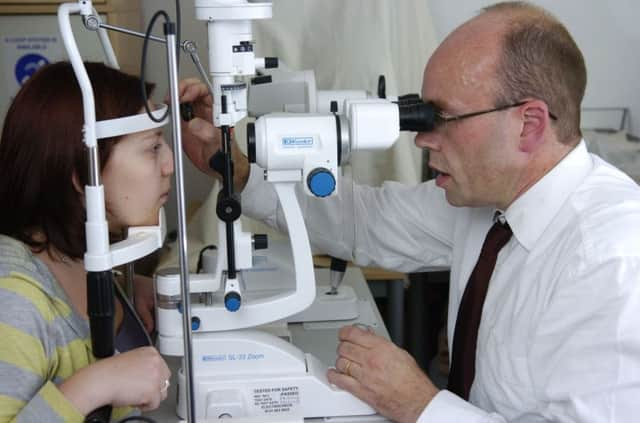Gene therapy could help thousands of blind people


In early tests on blind dogs with an inherited disease similar to the human condition retinitis pigmentosa (RP), the animals were able to tell the difference between flashing and non-flashing lights.
Blind mice given the same treatment were able to navigate a maze as well as normal mice.
Advertisement
Hide AdAdvertisement
Hide AdThe new approach creates replacement photoreceptors from cells that do not normally react to light. Clinical trials in humans with degenerative eye diseases could follow.
The “hybrid” treatment, reported in the journal Proceedings of the National Academy of Sciences, involves a gene that alters non-light-sensitive cells and an injected chemical “photoswitch”.
Professor Ehud Isacoff, from the University of California at Berkeley, said: “The dog has a retina very similar to ours, much more so than mice, so when you want to bring a visual therapy to the clinic, you want to first show that it works in a large animal model.
CONNECT WITH THE SCOTSMAN
• Subscribe to our daily newsletter (requires registration) and get the latest news, sport and business headlines delivered to your inbox every morning
“We’ve now shown that we can deliver the photoswitch and restore light response to the blind retina in the dog as well as in the mouse. We can reanimate the dog retina.”
The new treatment employs a virus to insert a gene into normally non-light-sensitive cells that gives them the potential to “see”.
The gene makes a protein that acts like a lock. When the right molecular key from the photoreceptor switch is slotted into the lock, light sensitivity is turned on.
However, a new injection of the photoswitch has to be made every week to maintain its effect.
Advertisement
Hide AdAdvertisement
Hide AdThe therapy is said to show promise because, although diseases such as RP destroy the eye’s photosensitive cells, other cells in the retina are often left intact.
In tests on mice, the gene was successfully inserted into almost every one of the rodent’s million or so retinal ganglion cells. The scientists are also looking to see if the photoswitch can activate other receptor types, including some that might allow perception of fainter light.
The therapy is one of a number of potential treatments for blindness at early stages of development, two of which yielded promising trial results this year.
In October, scientists from the US company Ocata Therapeutics showed that stem cell-derived retinal cells could safely be implanted into patients and improve vision in some cases.
Earlier this year, scientists at Oxford University hailed trial results from a genetic therapy for choroideremia, a rare inherited cause of blindness that affects one in 50,000 people.
Inserting a missing gene called REP1 prevented progression towards blindness and led to dramatic improvements in sight for two men at an advanced stage of vision loss.
RP affects around 25,000 people in the UK and at least two million around the world.
Around one in 80 of the population carries one of the faulty genes that cause the disease.
SCOTSMAN TABLET AND IPHONE APPS